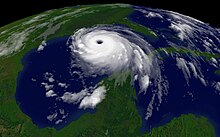
Six Flags New Orleans is an abandoned theme park located near the intersection of Interstate 10 and Interstate 510 in New Orleans. It first opened as Jazzland in 2000, and a leasing agreement was established with Six Flags in 2002 following the previous operator's bankruptcy proceedings. Six Flags invested $20 million in upgrades, and the park reopened as Six Flags New Orleans in 2003. Following the substantial damage caused by Hurricane Katrina in 2005, the park remained closed to the public in order to make efforts to repair and reopen it. However, in 2009, the city of New Orleans ended its 75-year lease with Six Flags, and the park consequently became permanently closed due to the extreme damage that was too severe to be repaired.

The Times-Picayune/The New Orleans Advocate is an American newspaper published in New Orleans, Louisiana. Ancestral publications of other names date back to January 25, 1837. The current publication is the result of the 2019 acquisition of The Times-Picayune by the New Orleans edition of The Advocate in Baton Rouge, Louisiana.

Hurricane Katrina was a devastating and deadly Category 5 Atlantic hurricane that caused 1,836 fatalities and damages estimated between $97.4 billion to $145.5 billion in late August 2005, particularly in the city of New Orleans and its surrounding area. At the time, it was the costliest tropical cyclone on record, later tied by Hurricane Harvey in 2017. Katrina was the twelfth tropical cyclone, the fifth hurricane, and the third major hurricane of the 2005 Atlantic hurricane season. It was also the fourth-most intense Atlantic hurricane to make landfall in the contiguous United States, gauged by barometric pressure.

As the center of Hurricane Katrina passed southeast of New Orleans on August 29, 2005, winds downtown were in the Category 1 range with frequent intense gusts. The storm surge caused approximately 23 breaches in the drainage canal and navigational canal levees and flood walls. As mandated in the Flood Control Act of 1965, responsibility for the design and construction of the city’s levees belongs to the United States Army Corps of Engineers and responsibility for their maintenance belongs to the Orleans Levee Board. The failures of levees and flood walls during Katrina are considered by experts to be the worst engineering disaster in the history of the United States. By August 31, 2005, 80% of New Orleans was flooded, with some parts under 15 feet (4.6 m) of water. The famous French Quarter and Garden District escaped flooding because those areas are above sea level. The major breaches included the 17th Street Canal levee, the Industrial Canal levee, and the London Avenue Canal flood wall. These breaches caused the majority of the flooding, according to a June 2007 report by the American Society of Civil Engineers. The flood disaster halted oil production and refining which increased oil prices worldwide.
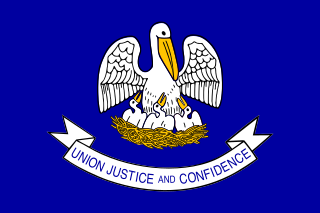
Criticism of the government response to Hurricane Katrina was a major political dispute in the United States in 2005 that consisted primarily of condemnations of mismanagement and lack of preparation in the relief effort in response to Hurricane Katrina and its aftermath. Specifically, there was a delayed response to the flooding of New Orleans, Louisiana.
Hurricane Katrina had many social effects, due the significant loss and disruption of lives it caused. The number of fatalities, direct and indirect, related to Katrina is 1,833 and over 400,000 people were left homeless. The hurricane left hundreds of thousands of people without access to their homes or jobs, it separated people from relatives, and caused both physical and mental distress on those who suffered through the storm and its aftermath, such as Post-traumatic stress disorder (PTSD).

This article contains a historical timeline of the events of Hurricane Katrina on August 23–30, 2005 and its aftermath.
Susan Roesgen is an American television reporter. She has worked in radio and television broadcasting for more than two decades, including prime time news anchor positions at several TV stations. She has worked as a general assignment correspondent for CNN from 2005 to 2009, and now works for New Orleans TV station WGNO, the local ABC television affiliate.

Ronald Edward Virgets was an American writer, commentator, and journalist. A native of New Orleans, Louisiana, he lived there for most of his life.
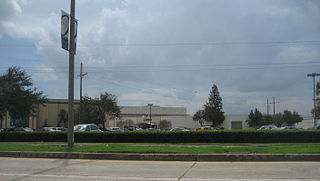
Oakwood Center is a major shopping mall in Terrytown, Louisiana, on the West Bank of the Mississippi River in the New Orleans metropolitan area. It was originally named "Oakwood Mall", and some signage and local usage continue to call it that. It is geographically in Terrytown, but the mailing address is adjacent Gretna, Louisiana. The anchor stores are Dick's Sporting Goods, Old Navy, Shoe Dept. Encore, JCPenney, and Dillard's. There is 1 vacant anchor store that was once Sears.
Walter James Amoss III is former editor of The Times-Picayune. Under his leadership and that of the publisher, Ashton Phelps Jr., the paper won two Pulitzer Prizes in 1997 for public service and editorial cartooning, and in 2006 won two more Pulitzer Prizes for its coverage of Hurricane Katrina.
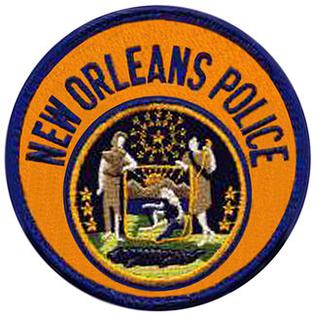
The New Orleans Police Department (NOPD) has primary responsibility for law enforcement in New Orleans, Louisiana. The department's jurisdiction covers all of Orleans Parish, while the city is divided into eight police districts.

Chris Rose is a New York Times Best-Selling New Orleans, Louisiana, writer and journalist. For years best known for light-hearted writing in the Times-Picayune, he gained greater attention for his chronicles of the effect of Hurricane Katrina on New Orleans since 2005.

The Louisiana Superdome was used as a "shelter of last resort" for those in New Orleans unable to evacuate from the city when Hurricane Katrina struck on August 29, 2005.
Renee Peck is an American writer, best known for her weekly column in The Times-Picayune titled "This Mold House." Peck spent three-plus decades working as a feature editor and reporter for The New Orleans Times-Picayune, covering everything from food to TV to home and garden.

Helena Nancy Moreno is a Mexican-American realtor, equestrienne, former journalist, and politician serving as the president of the New Orleans City Council and First Division Councilmember-at-Large.
Ted M. Jackson is an American photojournalist, writer and public speaker who has spent over three decades exploring the human condition while covering news, sports and features for the Times-Picayune in New Orleans, Louisiana. He contributes to the newspaper’s extensive gallery of photographs of the Greater New Orleans Area.
Carol Guzy is an American news photographer. Guzy worked as a staff photographer for the Miami Herald from 1980 to 1988 and The Washington Post from 1988 to 2014. As of April 2022, Guzy is a contract photographer for ZUMA Press.
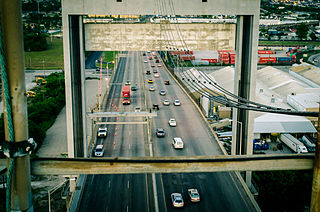
On the morning of September 4, 2005, six days after Hurricane Katrina struck New Orleans, members of the New Orleans Police Department (NOPD), ostensibly responding to a call from an officer under fire, shot and killed two civilians at the Danziger Bridge: 17-year-old James Brissette and 40-year-old Ronald Madison. Four other civilians were wounded. All the victims were African-American. None were armed or had committed any crime. Madison, a mentally disabled man, was shot in the back. The shootings caused public anger and further eroded the community's trust in the NOPD and the federal response to Hurricane Katrina overall.
Trymaine D. Lee is an American journalist. He shared a Pulitzer Prize for breaking news coverage of Hurricane Katrina as part of a team at The Times-Picayune of New Orleans. From 2006 to 2010, Lee wrote for The New York Times and from early 2011 to November 2012 he was a senior reporter at The Huffington Post. Since then Lee has been a national reporter for MSNBC, where he writes for the network's digital arm, and hosts the podcast Into America.
